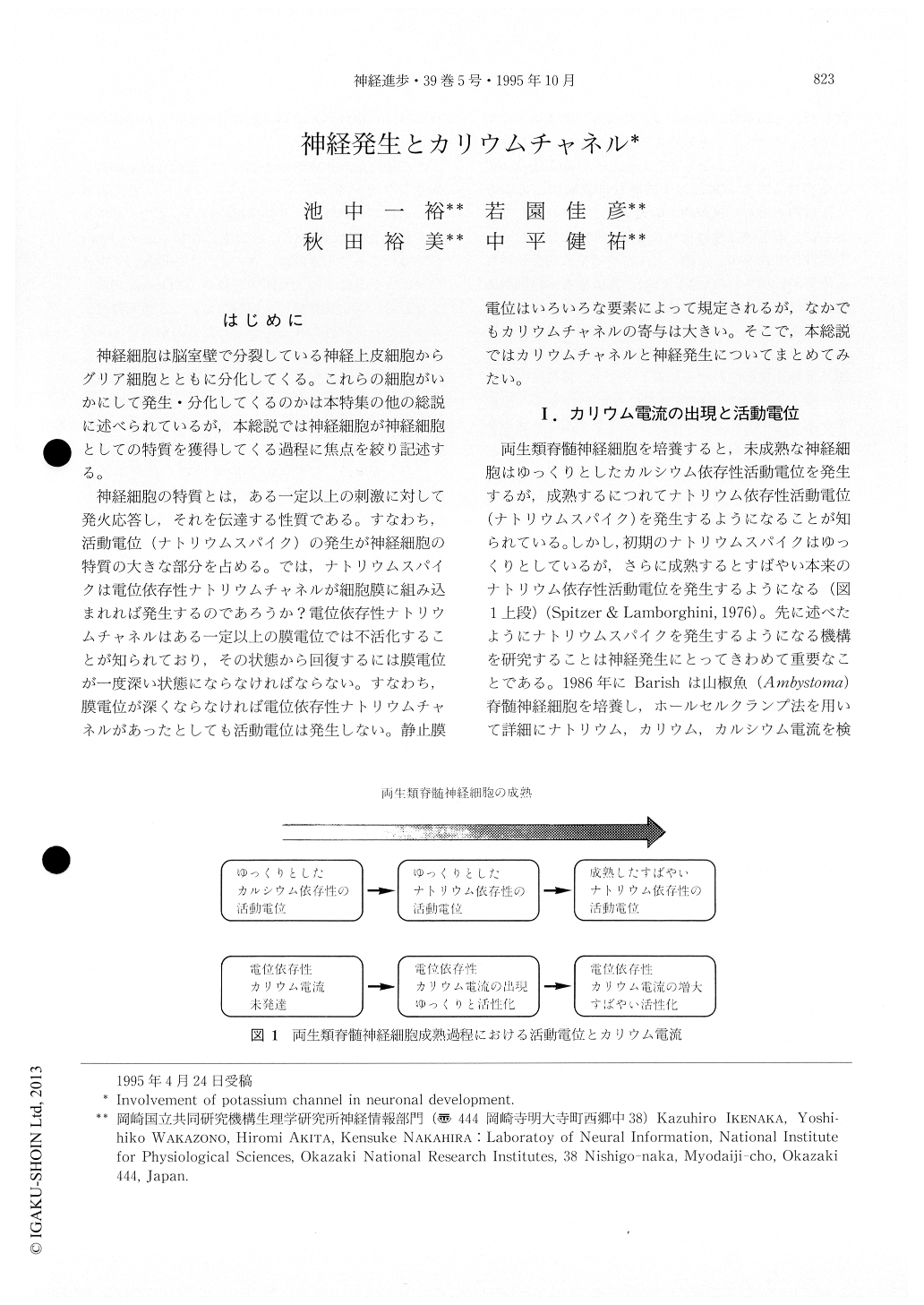Japanese
English
- 有料閲覧
- Abstract 文献概要
- 1ページ目 Look Inside
はじめに
神経細胞は脳室壁で分裂している神経上皮細胞からグリア細胞とともに分化してくる。これらの細胞がいかにして発生・分化してくるのかは本特集の他の総説に述べられているが,本総説では神経細胞が神経細胞としての特質を獲得してくる過程に焦点を絞り記述する。
神経細胞の特質とは,ある一定以上の刺激に対して発火応答し,それを伝達する性質である。すなわち,活動電位(ナトリウムスパイク)の発生が神経細胞の特質の大きな部分を占める。では,ナトリウムスパイクは電位依存性ナトリウムチャネルが細胞膜に組み込まれれば発生するのであろうか?電位依存性ナトリウムチャネルはある一定以上の膜電位では不活化することが知られており,その状態から回復するには膜電位が一度深い状態にならなければならない。すなわち,膜電位が深くならなければ電位依存性ナトリウムチャネルがあったとしても活動電位は発生しない。静止膜電位はいろいろな要素によって規定されるが,なかでもカリウムチャネルの寄与は大きい。そこで,本総説ではカリウムチャネルと神経発生についてまとめてみたい。
In amphibian spinal cord neuron, action potential converts from long duration and calcium-dependent type to short duration and sodium-dependent type. Delayed rectifier potassium current and A current appear and increase during this maturation process of neuron. Molecular mechanism underlying this maturation process was investigated.
Immature neurons exhibit T current, which is a low threshold calcium current. However, they show very little outward current and their resting membrane potential is unstable.

Copyright © 1995, Igaku-Shoin Ltd. All rights reserved.


